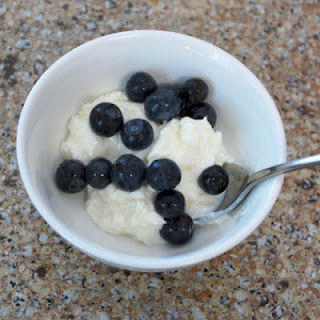The Baked Beans in America are so very different from the Baked Beans we grew up. The beans of our childhood were largely the Heinz Variety of beans. These beans were most definitely a breakfast accompaniment or a fast weekend meal or after-school snack. Childhood beans were savory, tomatoey, straightforward, with a hint of sweetness, came out of a can and were served on toast or with a good ol' fry-up.
To wander down the aisle of a supermarket here, one is assaulted by the myriad beans available. Beans here are much more of a staple and served with the main meal - mostly with a traditional BBQ (i.e. pulled pork, ribs, etc.). Beans are typically sweet, smokey, meaty and hearty.
Paul has been experimenting with baked beans - and largely does this with an ad-hoc taste-as-you-cook approach. I have tried to quantify a recipe and have developed the one below. I used this Boston Baked Beans recipe as the basis.
I chose to use Black Beans as I have been looking into the health benefits of these, these are a bean that Paul tolerates and... I had some pre-prepared black beans in the freezer! I had previously cooked a big batch of beans (after soaking), with a strip of Kombu and after draining, had frozen these in containers (each with 2 cups).
We had found a bacon-type product on our recent trip to North Carolina, and used this in the recipe. We think it was a slab of bacon or smoked pork? Regardless, it was able to be chopped in thick chunks that added to the 'heartiness' of this dish.
Ingredients:
2 cups cooked black beans
6 oz bacon, sliced into thick chunks
1 diced Onion
3 tbsp Mollasses
2 tbsp Tomato Paste
1 tbsp Worcestshire Sauce
1/4 tsp dry mustard
1/4 tsp black pepper
1 tsp Kosher salt
3 tbsp Brown Sugar
2 tbsp Bourbon
1/4 cup water (approx).
Method:
Place prepared beans, chopped bacon and onion into a 2 litre / 2 quart dutch oven and stir to combine.
Place Molasses, Tomato Paste, Worcestershire Sauce, Mustard, Pepper, Salt and Sugar into a small saucepan and bring to a boil, stirring to combine. Add bourbon and pour over beans. Add more water as necessary (to moisten beans but not cover them).
Bring beans to a boil. Reduce to a slow simmer, cover and cook for 2½ to 3 hours, stirring from time to time, until bacon has softened and a rich gravy has formed.
 |
| beans served with a corn muffin |
Note:
The tablespoon measure I used was an imperial measure (15ml - or the equivalent of 3 teaspoons).
Paul likes to add some Liquid Smoke to his beans for a more intense smokey flavor. The liquid smoke would provide a smokey flavor for a vegetarian version of this dish - cooked without the bacon.

























